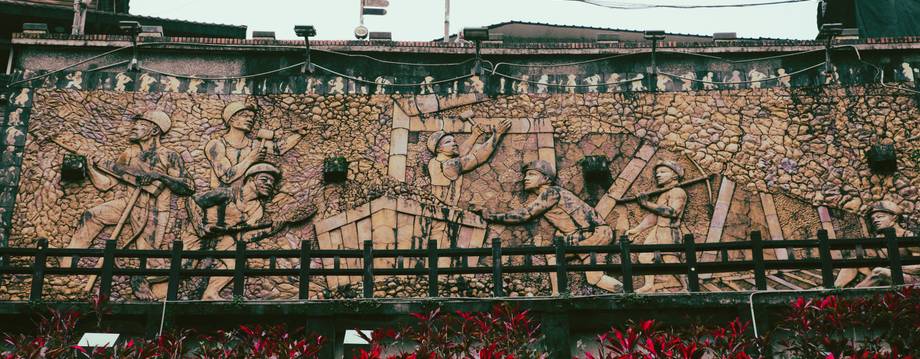Getting into the spirit
The town of Jiufen is a magical inspiration
Robyn Gilmour
Photos:
Doug Wilson Garry
Saturday 31 May 2025

This article is from
Taiwan
issue 118
Share this article
Hayao Miyazaki insists that Jiufen was not his inspiration for the mountainside village in Spirited Away, the famous animated film by Studio Ghibli, but the resemblance is so striking that fans have made Jiufen a site of pilgrimage. When we visit, it’s early in the morning, and easy to imagine yōkai lingering around the town’s moss and fern-shrouded torii gates — relics of Japanese occupation — and spirits charging through the silent streets, pushing aside the last tendrils of morning fog. It would be eerie if not for signs of life rustling behind mostly-shuttered shop fronts; restaurants are preparing for the day, and employees are quietly chopping, steaming, and rolling dumplings in anticipation of the daytrippers.
It is hard to believe that a very average-looking bus, running regularly and leaving from central Taipei, can take you from city to mountain in just an hour and a half. It’s almost too easy to escape to Jiufen, a tiny village east of Taipei that clings to the side of Mount Jilong. If you’re partial to a hike, Jiufen is a popular starting point for several trails that lead walkers through the mountain’s luscious greenery to peaks with unparalleled views of the island’s northern coastline. However, most people visit Jiufen to take in the town itself, which seems carved into the mountain, and comprises a maze of narrow alleyways lined with tiny teahouses and shopfronts selling food and souvenirs.
Ghibli did not launch Jiufen from obscurity into the public eye, even if that’s what engenders the most interest in visiting nowadays; the village has a storied history of its own, one that’s even more alluring than its outward appearance. Jiufen was once a gold mining town, with the precious metal found there as early as the fifteenth century, mostly by Dutch occupiers and travelling Japanese traders. However, it wasn’t until the construction of the Taipei Keelung railway, in 1890, that the true extent of the region’s wealth was uncovered, and kilos of gold started being sifted out of the region’s riverbeds on a daily basis.

Of course, 1890 was just five years before Taiwan was annexed by Japan, so gold mining operations reached a peak under colonial rule. As such, Jiufen became heavily populated by Japanese business people who built new parts of the town in the image of home. Shinto temples, and traditional Japanese guest houses sprung up between shrines to ancient, local deities and ornate, brightly-coloured roofs. These two distinct architectures remain a part of Jiufen today, and while visually breathtaking to observe side by side, they also tell the story of Taiwan’s colonial history and the distinct identity that exists in spite of it.
If you find yourself in Jiufen for the day, it’s well worth the 20-minute bus journey (or half hour walk) to Jinguashi where a Gold Mining Museum was opened in 2004. Visitors can try their hand at panning for gold, learn about the region’s geology, and get up close and personal with artefacts that will transport them to Taiwan’s recent past. For such a tiny town, Jiufen has a lot going for it, meaning it can get busy during peak tourist season. As such, I would encourage leaning into your jetlag and beating the crowds with an early bus, or better yet stay a night in a central guesthouse to enjoy this charming town uninhibited by daytrippers. If the supreme stillness of Jiufen just after dawn is anything to go by, it’s the perfect place to be spirited away.
Share this article

